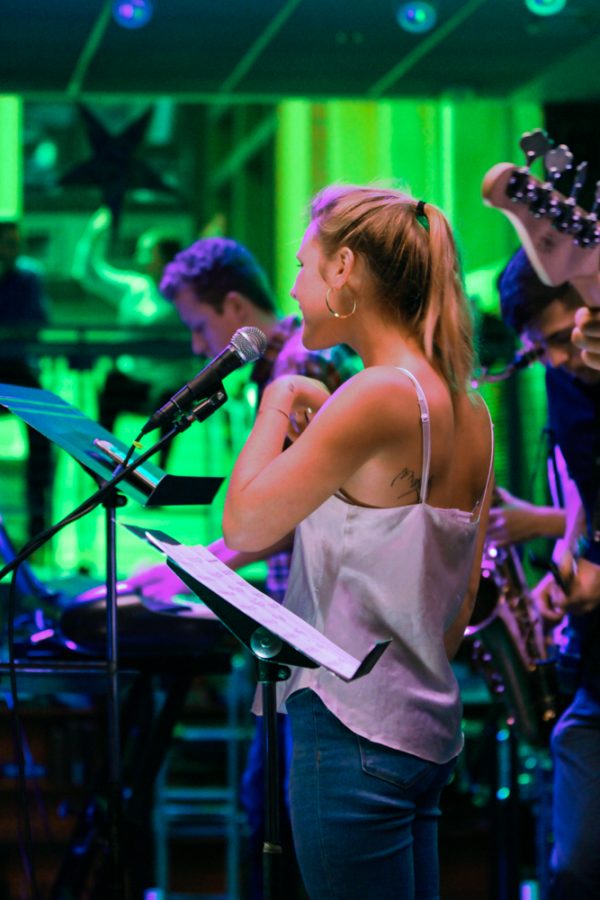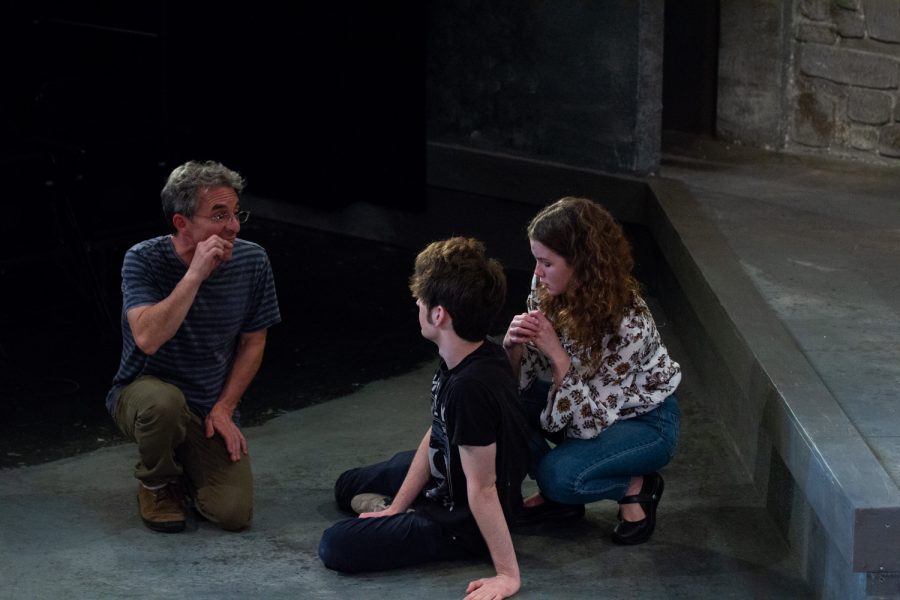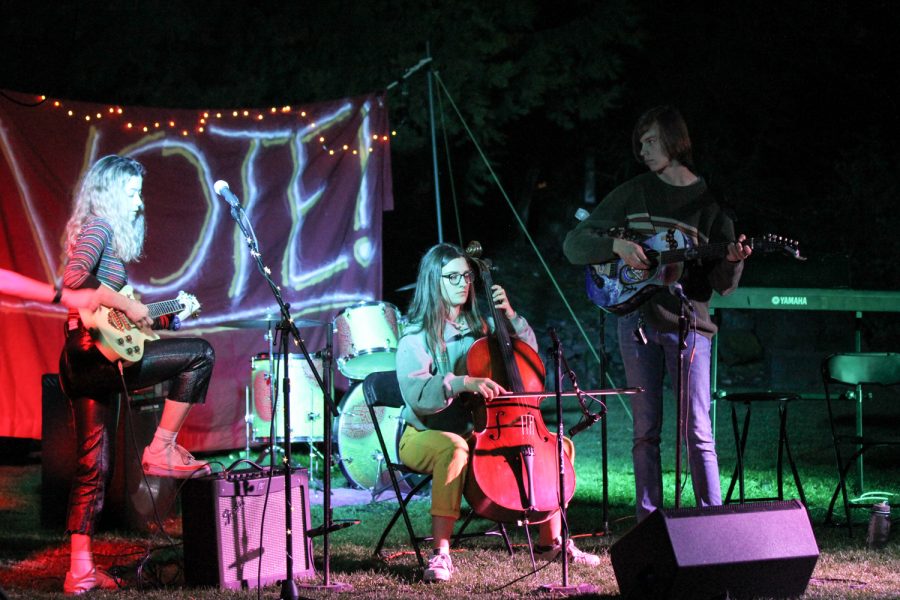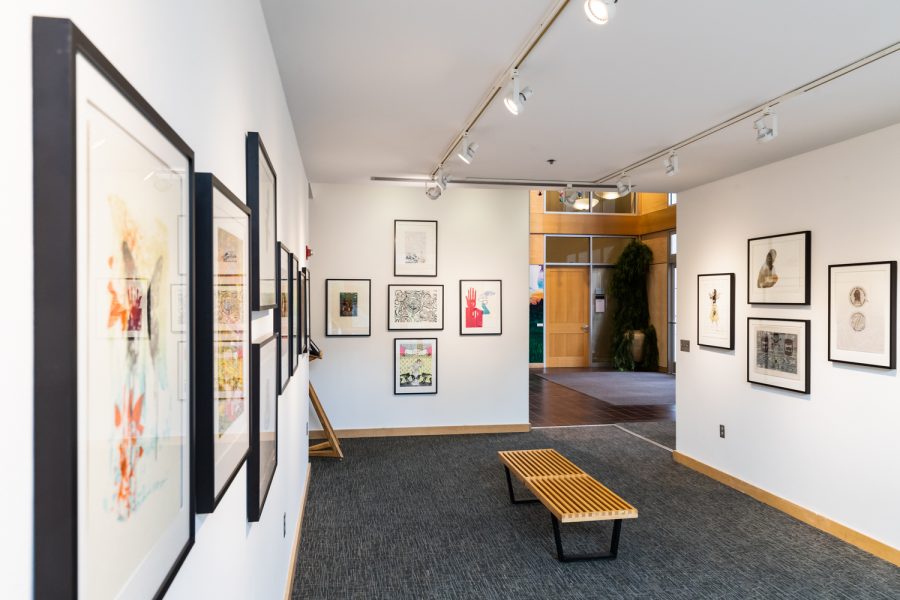
Because students have become so accustomed to the 20+ sculptures on Whitman Campus, it’s easy to take the artwork for granted. Yet, these sculptures are some of the very features that make Whitman College unique. Few colleges have as large of a range of sculptures on campus.
“As public art, [Whitman campus’] sculpture enriches the campus landscape for visitors, members of the Walla Walla community and those of us who have the privilege of living and working here,” said President George Bridges. “By creating opportunities for inspiration and adding aesthetic value to our campus grounds, its presence significantly enhances how we can connect emotionally and psychologically with Whitman’s outdoor spaces.”
Below, The Pioneer provides some historical context to a select number of sculptures on campus.

Carnival: This colorful piece is actually a headless, abstract version of the classic of Venus De Milo. Jim Dine, a nationally-renowned pop artist, created “Carnival” in 1997. Dine used a chainsaw to create the sculpture from the trunk of a tree, and then cast the tree in bronze at the Walla Walla Foundry. The foundry itself is owned and operated by Whitman alum Mark Anderson ’78.
“What I’ve come to realize through [an environmental aesthetics course] is that it’s more of a tool being used to help us think about beauty,” said sophomore Kenn Kochi, who is currently taking a course that discusses Dine’s piece. “So as a sculpture, do I find it beautiful? I don’t know, but it does help me think about beauty as a whole.”
Styx: Located at the edge of Ankeny Field, “Styx” is one of the most well-known sculptures on campus. The piece was crafted by Deborah Butterfield, an American artist known in particular for her sculptures of horses.

“The first time I heard [Styx] was made of metal, I didn’t believe it,” said junior Scott Cassidy. “Even when you are inches away it looks like wood.”
Even upon close inspection, the sculpture still appears to be made out of wood. Only when one actually touches (or climbs on) Styx does it become obvious that the materials are metallic. To create the sculpture, Butterfield collected driftwood from both the Columbia and Snake River. The driftwood sculpture was transformed into bronze at the Walla Walla Foundry.

Topophilia Gates: “Topophila Gates” stands in the creek running in front of Prentiss Hall. The sculpture consists of three gateways made out of metal and colorful glass with water running through them. Keiko Harra, an art professor at Whitman from 1985-2006, created the piece in 1999. Seeing as Topophilia means “love for a place,” the name of the gates is suited for its environment as a place of reflection. According to Herra, the inspiration for the piece came from a specific temple on top of a mountain in Japan that has multiple gates leading to a shrine.
Three Stories: Artist Squire Broel found the inspiration for “Three Stories” from the vibrant fish markets of Hong Kong. Broel originally created the design for a competition. After the piece was not selected, Anderson suggested that Broel craft it anyway. With the assistance of two Whitman student interns, Broel rendered the sculpture out of clay at the Walla Walla Foundry. “Three Stories” was first displayed in an art exhibition at the Sheehan Gallery in Olin Hall, and then purchased by the college and added to the campus in 1997.
A major theme which Broel believes is evoked by the sculpture is balance.

“The fish–a symbol of prosperity–is missing its flowing fins and is marked with deep and jutting scars, ” he said of the piece. “The golden lemon is so inviting, but its taste is sharp and bitter. The bowl–a fragile vessel–is precariously balanced and reveals its true contents. We have to continually ask ourselves if we are seeking a life of balance. Hopefully, we are all living intentionally and continually developing a greater understanding of our place in our local communities as well as the broader world.”
“Soaring Stones #4”: As one of the most recent additions to the series of sculptures on campus, “Soaring Stones #4” was installed outside Cordiner Hall in 2007. “Soaring Stones #4” consists of a row of six boulders from the Cascade Mountains, each boulder mounted upon a shiny steel pillar. The sculpture was originally created in 1990 by John T. Young, and was located along a sidewalk in downtown Portland, Ore. However, the sculpture was removed in 2006 in order to make way for public transportation.

“Pirouette”: Micajah Bienvenu ’86 was commissioned by the college to create this stainless steel sculpture inspired by a series of other spiral sculptures he had then recently created. Bienvenu used a three-dimensional design software to design the piece. Acquired by Whitman in 2004, “Pirouette” now stands near the Hall of Music.
“It seemed appropriate outside the music hall,” said Bienvenu. “It’s a sort of musical, uplifting and inspirational piece.”
Another of Bienvenu’s sculptures, “Triumphant Arc,” stands in front of Harper Joy Theatre.
“It’s a great collection,” said Bienvenu of the college’s sculpture exhibition. “I hope it grows more and more. I think it’s something that should be celebrated . . . Sculptures can make people stop, think, talk and become icons for places.”










